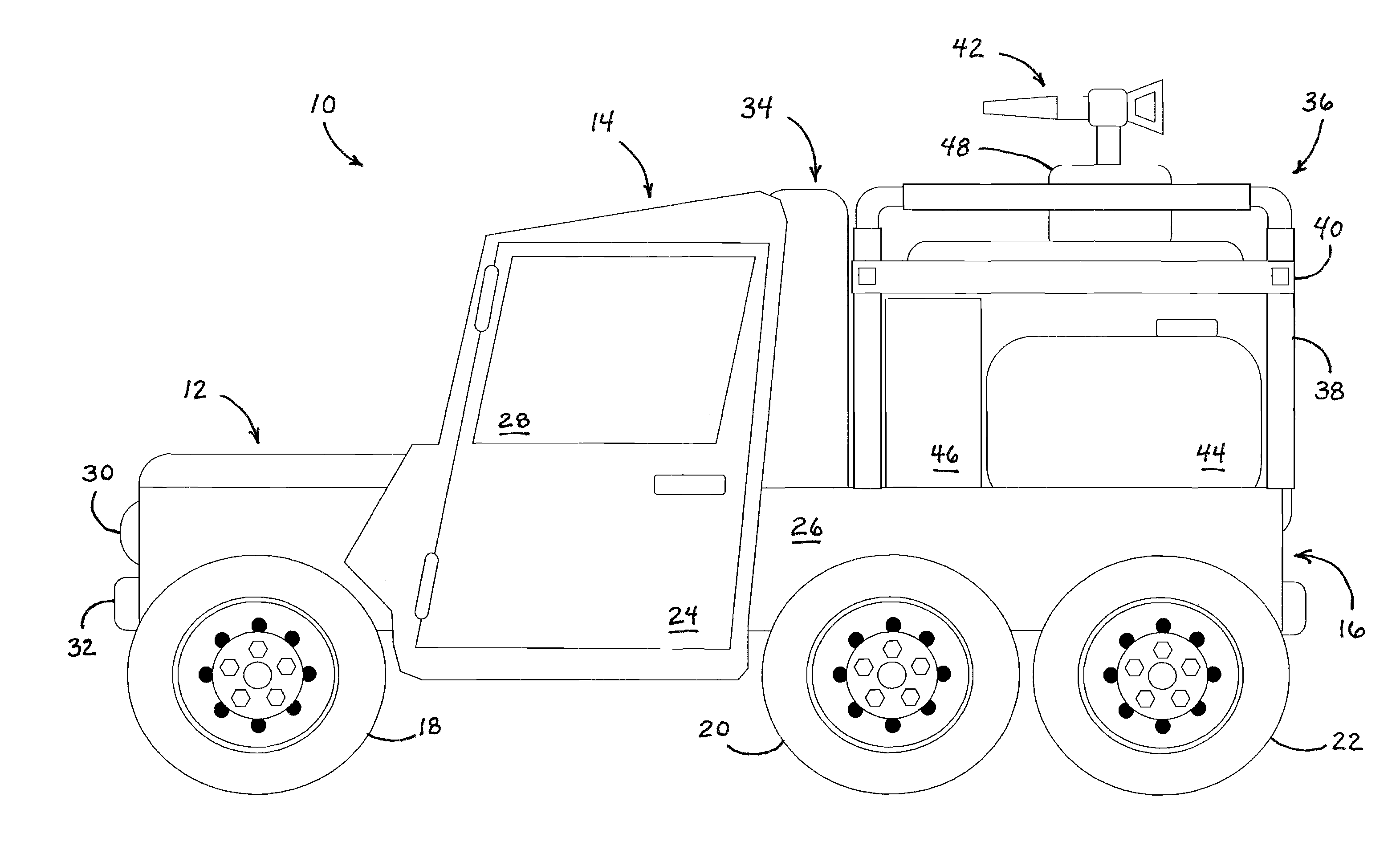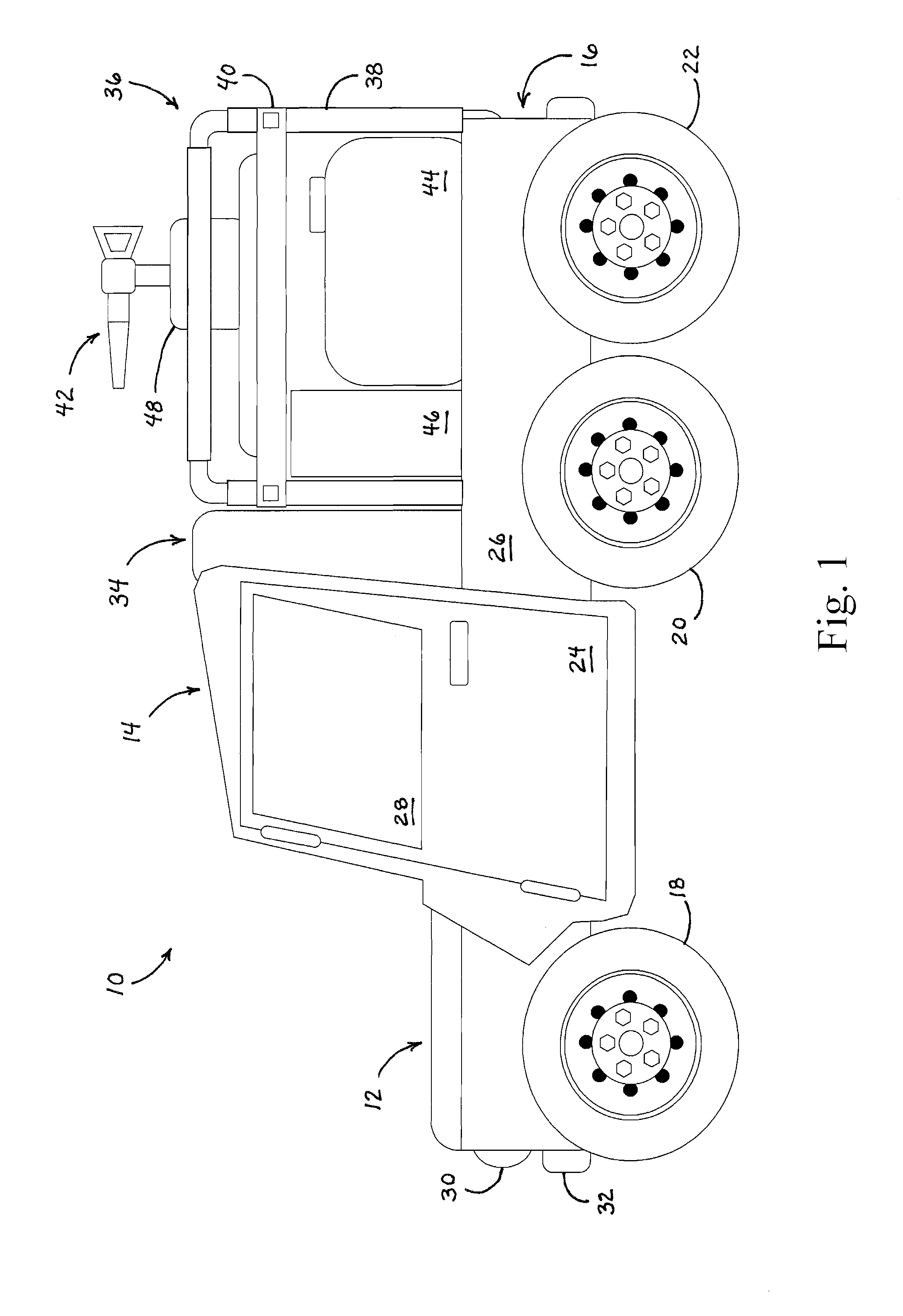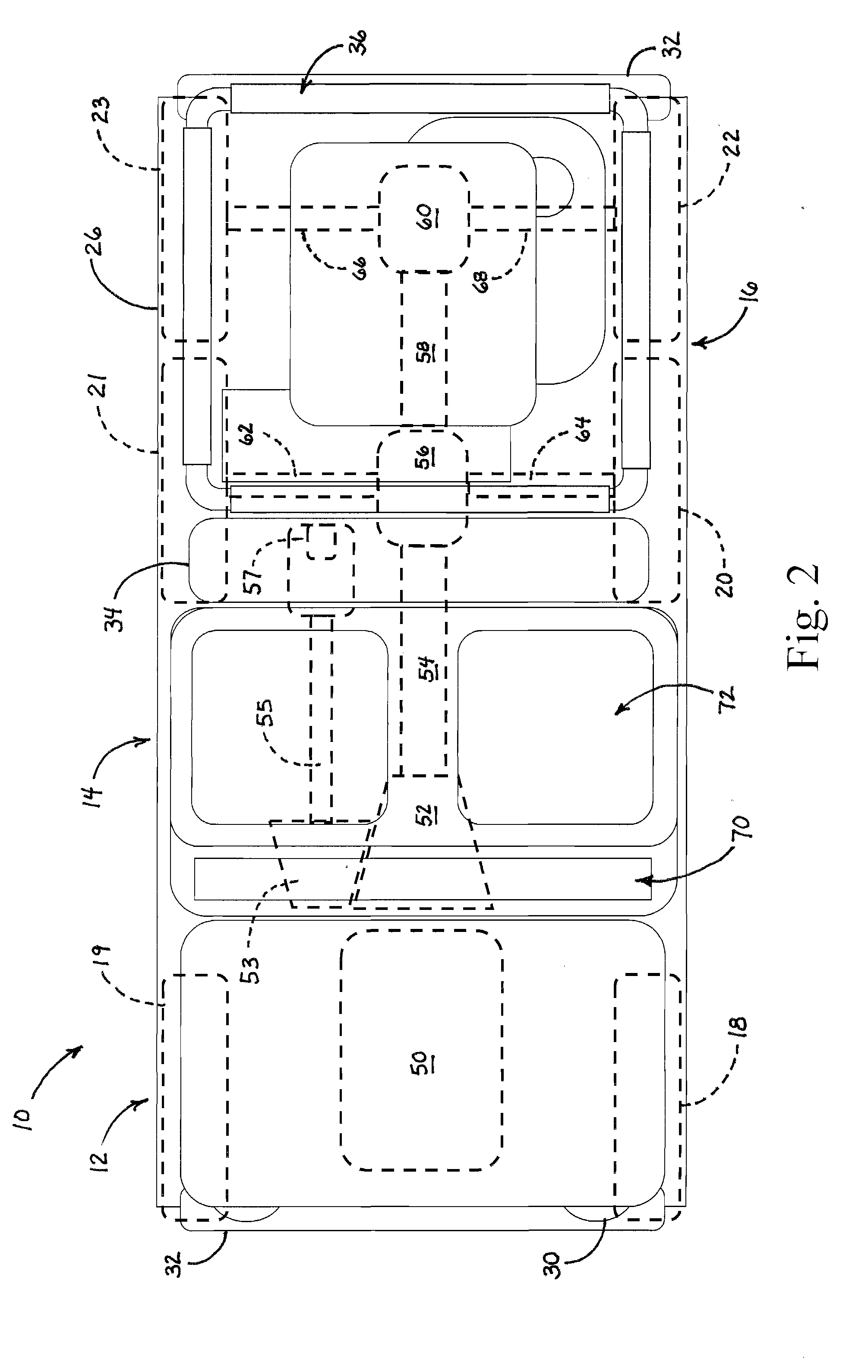Vehicle for Fire Control and Fire Rescue Operations in Extreme Wildlands
a fire control and extreme wildland technology, applied in fire rescue and other directions, can solve the problems of large and complex machinery, limited access to roads, and inability to transport individuals,
- Summary
- Abstract
- Description
- Claims
- Application Information
AI Technical Summary
Benefits of technology
Problems solved by technology
Method used
Image
Examples
Embodiment Construction
[0022]The vehicle of the present invention, as indicated above, is designed to be a street legal vehicle that meets all the necessary vehicular standards for on-road transportation. However, an objective of the present invention is to provide a vehicle that is smaller than the standard fire rescue vehicle and which incorporates a number of features and components that enable it to facilitate firefighting and fire rescue operations in off-road (wildland) conditions and in tighter confinement. The basic structure of the vehicle, as described in more detail herein below, derives heavily from the geometry and structure of the older M151 military Jeep® type vehicle. The vehicle of the present invention will, in the preferred embodiment, incorporate three axles; one front and two rears, and will utilize military type axles like those utilized in the M151 vehicles. These military style axles allow for the two rear axles to be tied together with a short drive shaft allowing both rear axles ...
PUM
 Login to View More
Login to View More Abstract
Description
Claims
Application Information
 Login to View More
Login to View More - R&D
- Intellectual Property
- Life Sciences
- Materials
- Tech Scout
- Unparalleled Data Quality
- Higher Quality Content
- 60% Fewer Hallucinations
Browse by: Latest US Patents, China's latest patents, Technical Efficacy Thesaurus, Application Domain, Technology Topic, Popular Technical Reports.
© 2025 PatSnap. All rights reserved.Legal|Privacy policy|Modern Slavery Act Transparency Statement|Sitemap|About US| Contact US: help@patsnap.com



